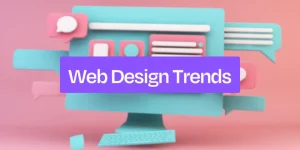
In the constantly changing world of web design, keeping up with the latest trends is essential for designers to develop contemporary, attractive, and user-friendly websites. As technology advances and user expectations shift, new design trends emerge, shaping the digital experiences of today and tomorrow. This blog post will explore the most prominent web design trends, from minimalist aesthetics to immersive user interactions. Join the Web Designing Course in Chennai at FITA Academy offers comprehensive insights and training on these trends.
Minimalism and Simplified Design
One of the prevailing trends in web design is minimalism, characterized by clean layouts, ample white space, and a focus on essential elements. Minimalist designs offer a clutter-free user experience, allowing visitors to navigate websites easily. By stripping away unnecessary elements and distractions, designers can create visually striking and highly functional websites that resonate with modern audiences.
Dark Mode and Light-on-Dark Color Schemes
Dark mode has surged in popularity, offering users an alternative color scheme that reduces eye strain and conserves battery life, particularly on OLED screens. Web designers increasingly incorporate dark mode and light-on-dark color schemes to give users more options for viewing websites in different environments and preferences.
Immersive Multimedia Experiences
Web design is becoming increasingly immersive, with multimedia elements such as videos, animations, and interactive graphics playing a central role in engaging visitors. By seamlessly integrating multimedia content into website layouts, designers can captivate audiences and convey information more dynamically and more memorable.
Scroll-triggered Animations
Scroll-triggered animations add depth and interactivity to web pages, enhancing the user experience and drawing attention to key content as visitors scroll down. From subtle fade-ins to complex parallax effects, scroll-triggered animations create a sense of progression and storytelling, making websites more engaging and visually appealing. Learning these techniques in a Web Design Course can help designers create more dynamic and interactive web experiences.
3D Elements and Illustrations
The use of 3D elements and illustrations in web design is rising, offering designers new creative opportunities to bring depth and realism to digital environments. Whether it’s incorporating 3D graphics, illustrations, or even entire scenes, 3D elements can elevate the visual impact of websites and create memorable user experiences.
Accessibility-First Design
Accessibility is a fundamental aspect of modern web design, ensuring that websites are usable and navigable by people of all abilities. Designers are increasingly prioritizing accessibility features such as alternative text for images, keyboard navigation, and color contrast ratios to make websites more inclusive and accessible to everyone.
Mobile-First Approach
With most internet traffic now coming from mobile devices, a mobile-first approach to web design has become essential. Designing websites with mobile users in mind from the outset ensures that they are responsive, fast-loading, and optimized for various screen sizes, providing a seamless experience across devices.
Sustainability and Eco-friendly Design
As environmental consciousness grows, sustainability and eco-friendly design principles are gaining traction in web design. Designers are exploring ways to reduce energy consumption, minimize carbon footprints, and use eco-friendly hosting solutions to create more sustainable websites that contribute to a greener digital ecosystem.
Personalization and Customization
Personalization is key to creating engaging user experiences, and web designers are leveraging data-driven insights to tailor content and design elements to individual users’ preferences and behaviours. From personalized recommendations to customizable interfaces, personalization enhances user engagement and fosters a deeper connection between brands and their audiences.
Voice User Interface (VUI) Integration
With the proliferation of voice-activated devices and virtual assistants, integrating voice user interfaces (VUIs) into web design is becoming increasingly important. Designers are exploring ways to optimize websites for voice search, voice commands, and conversational interactions, enabling users to access content and navigate websites hands-free.
Web design is a constantly evolving field, driven by technology developments, shifting user preferences, and new design trends. By staying informed about the latest trends and incorporating them thoughtfully into their designs, web designers can create visually stunning, user-friendly, and innovative websites that stand out in today’s competitive digital landscape. Whether embracing minimalism, exploring immersive multimedia experiences, or prioritizing accessibility and sustainability, embracing these trends can elevate the quality and impact of web design in exciting new ways. As we look to the future, the possibilities for creative expression and innovation in web design are limitless, promising even more exciting developments. Enrolling in the Training Institute in Chennai can provide the necessary skills and knowledge to stay ahead in this dynamic field.
